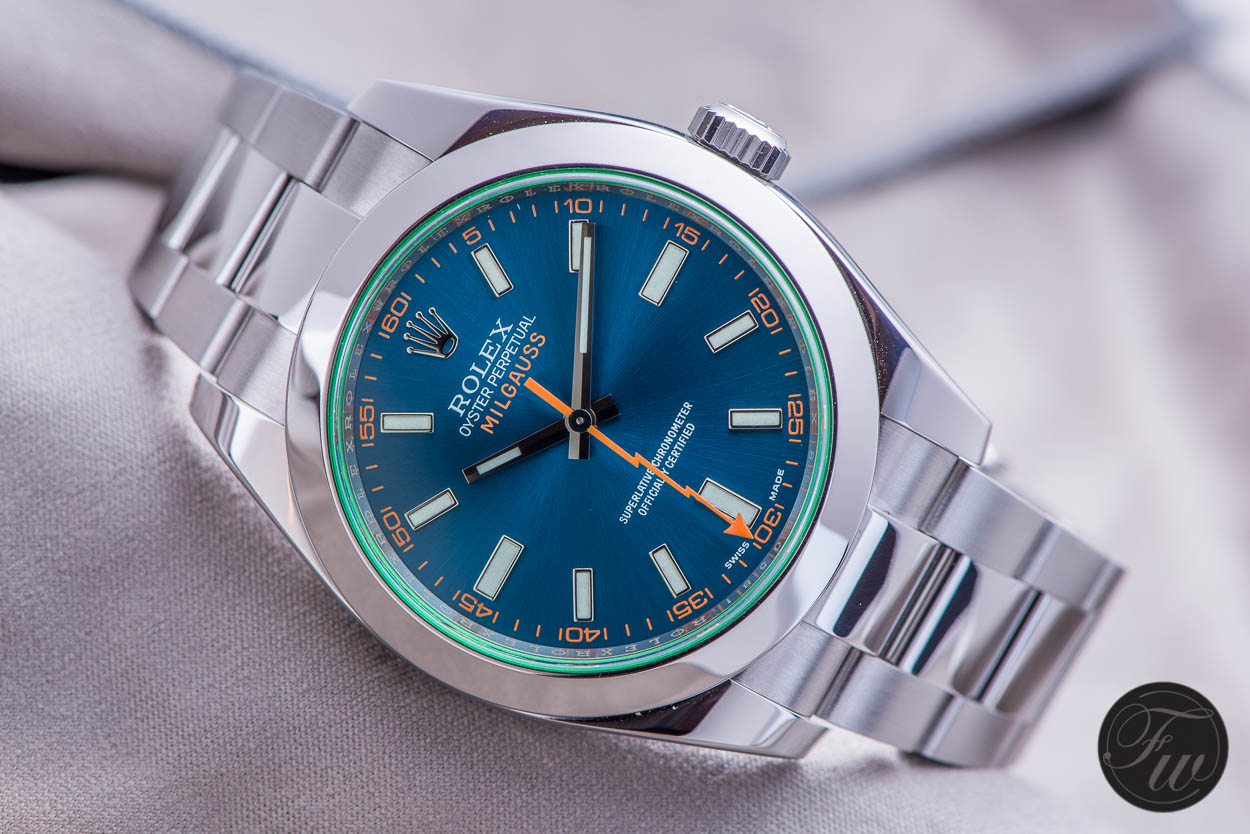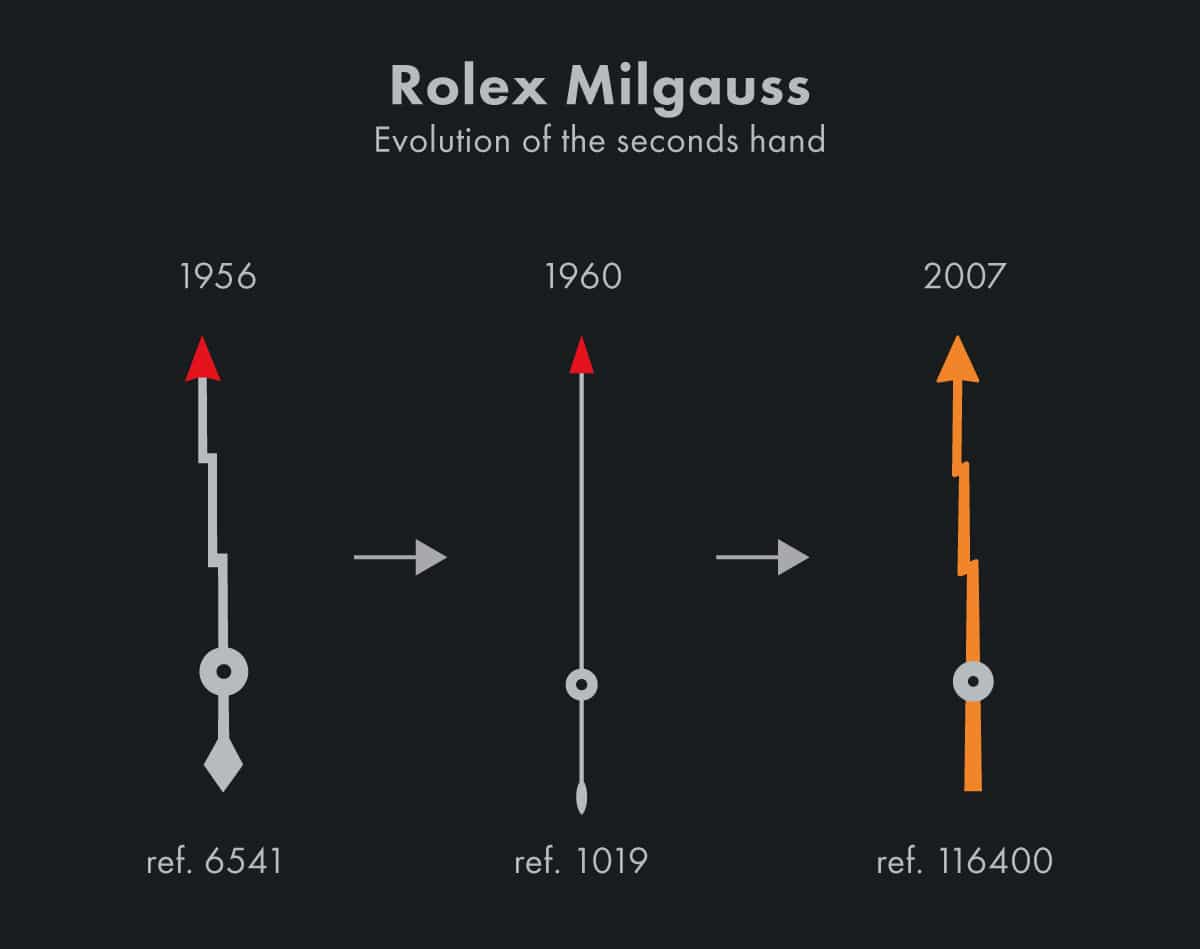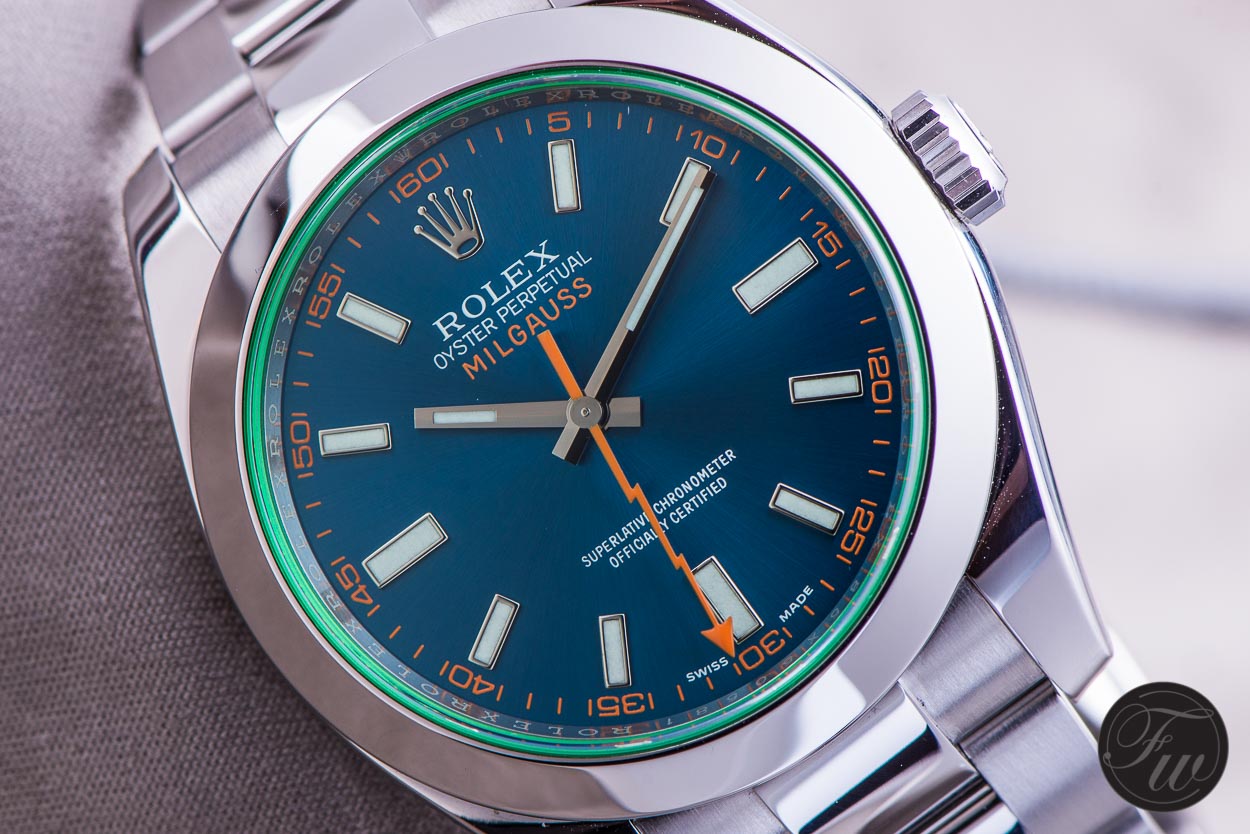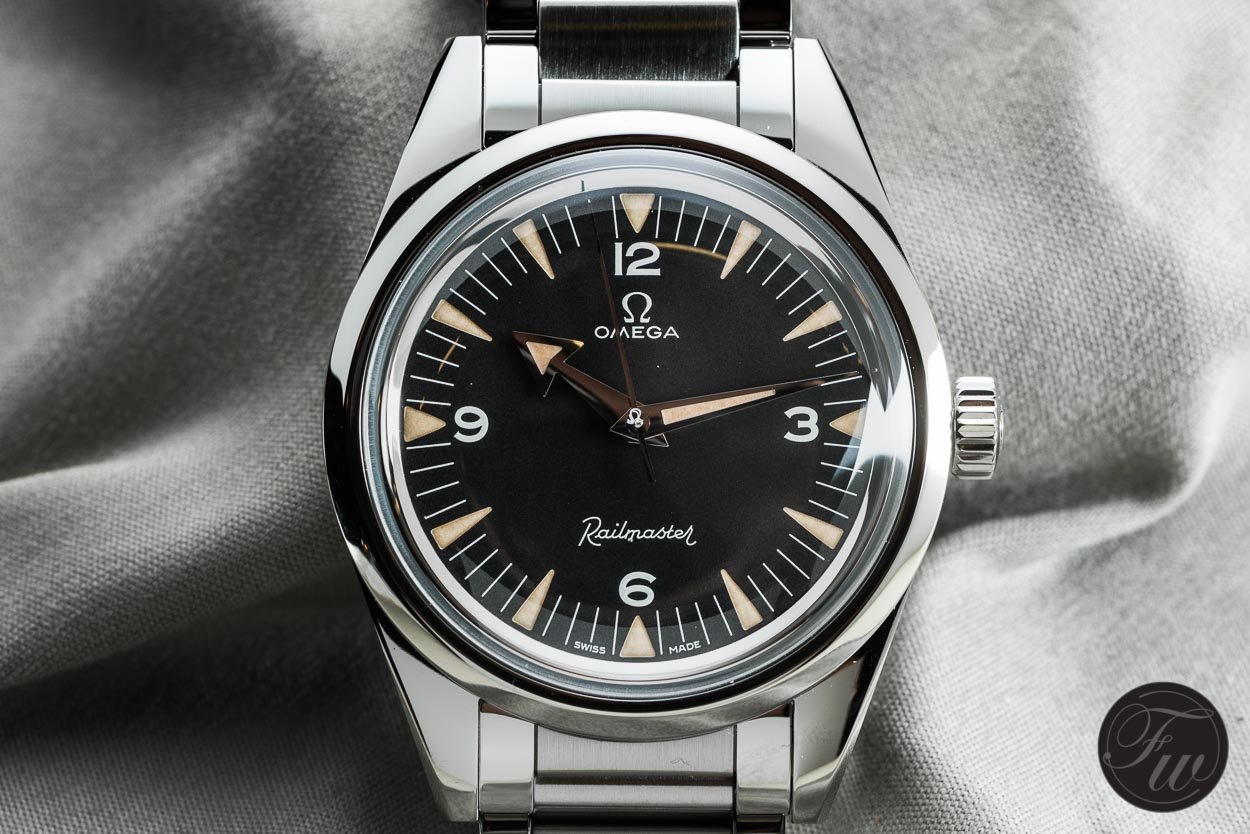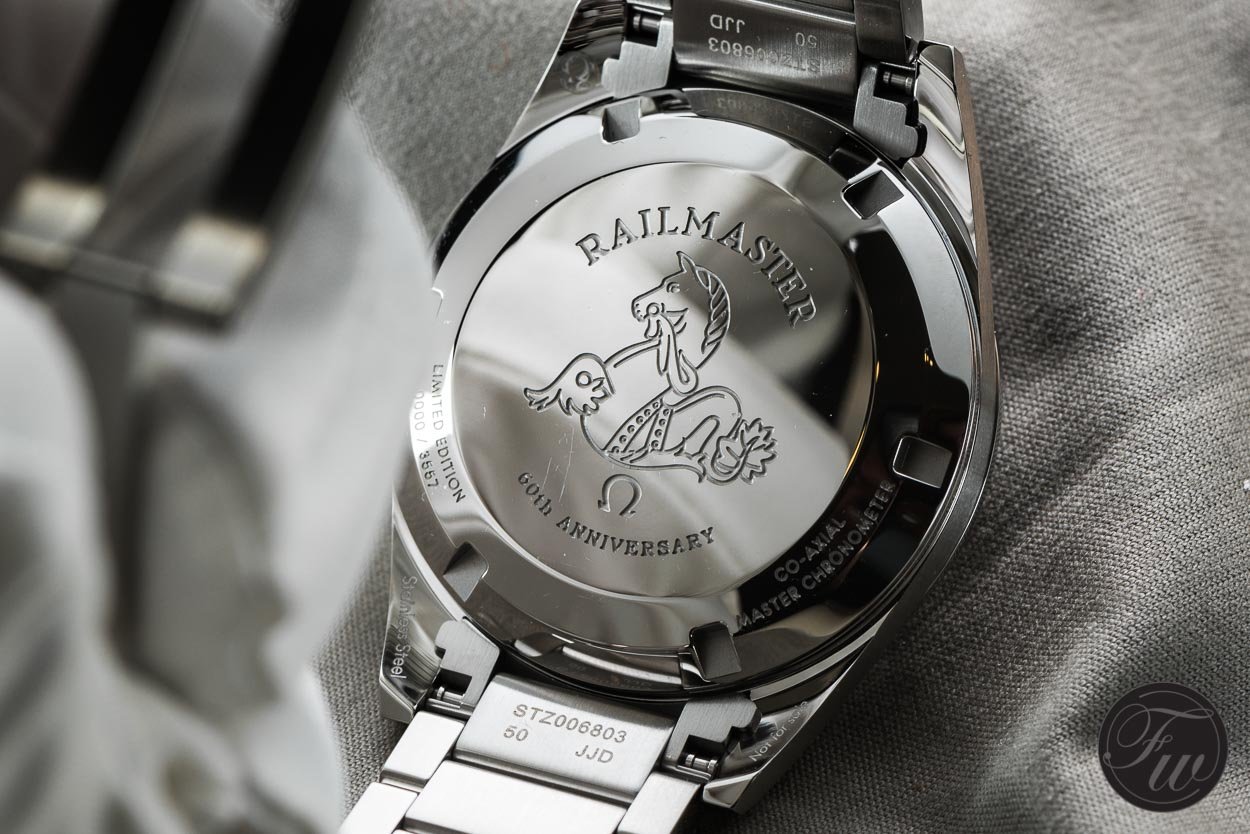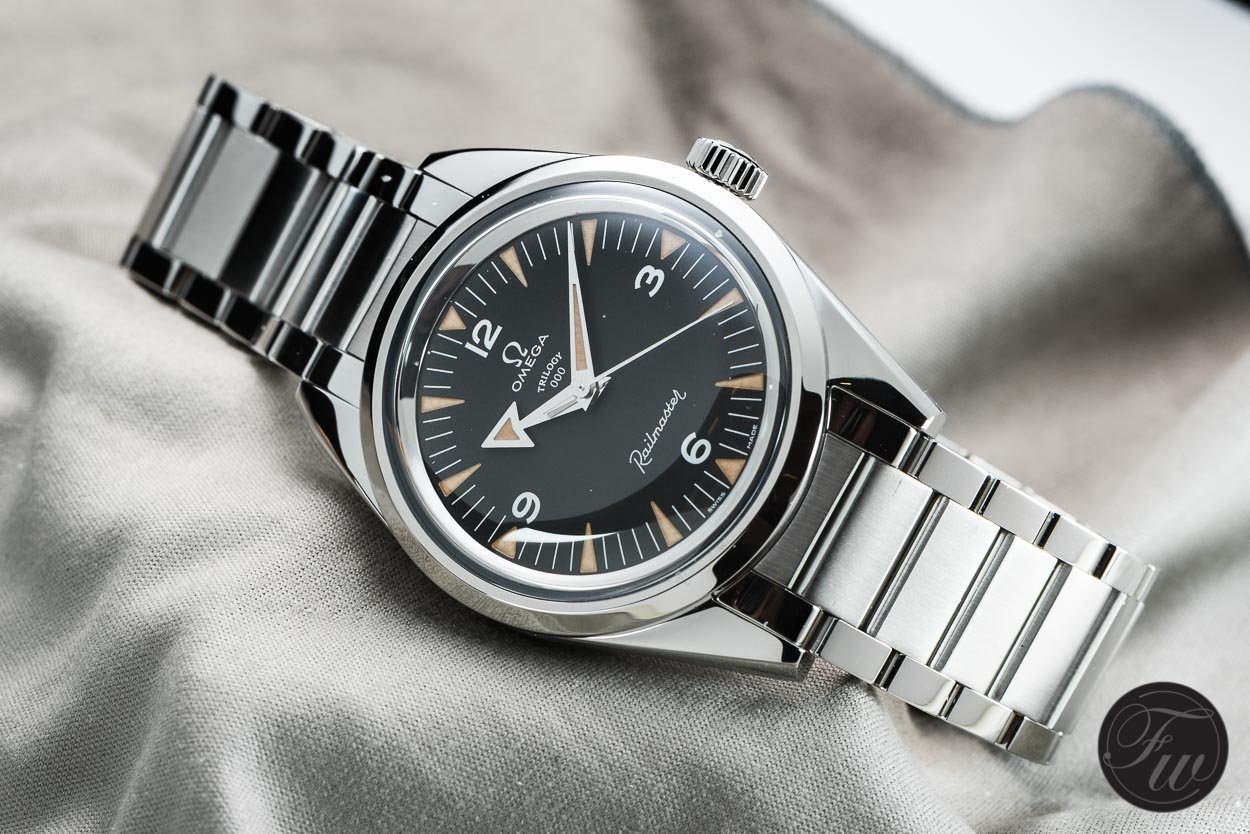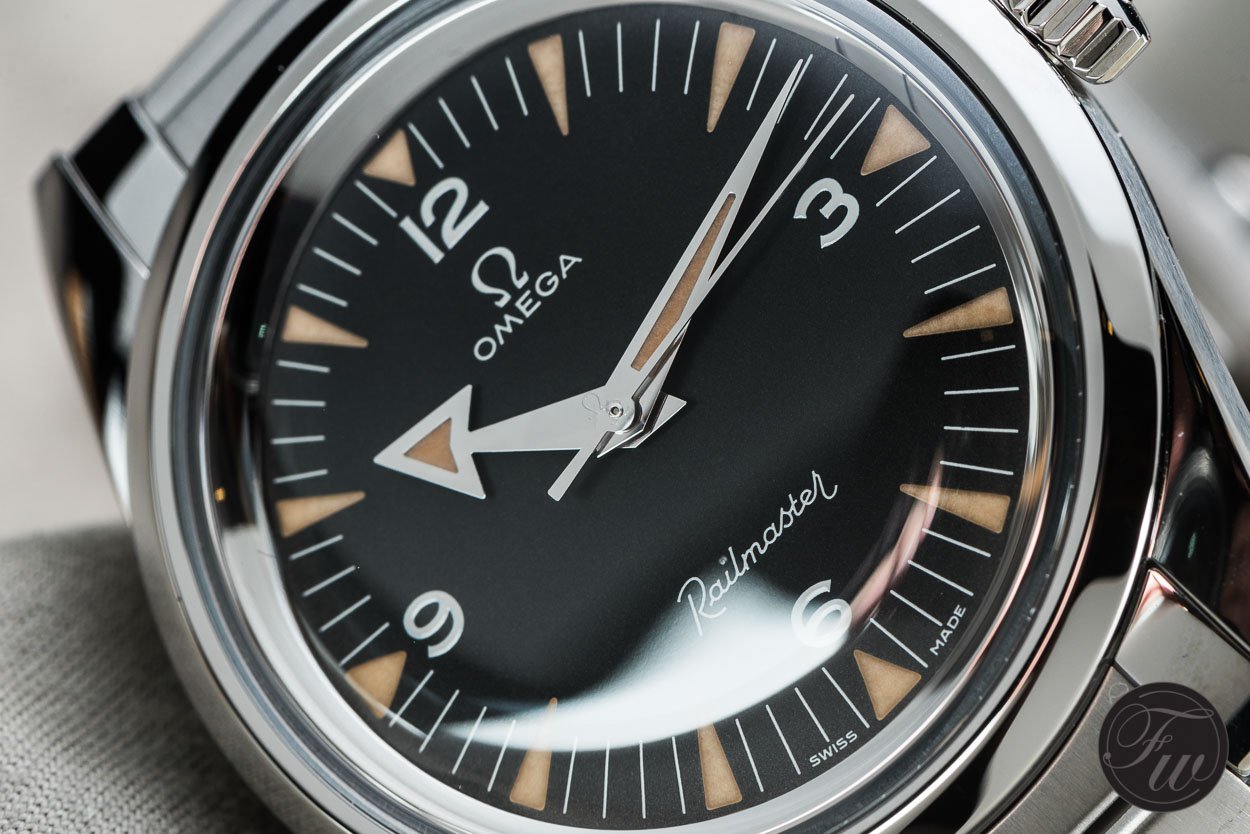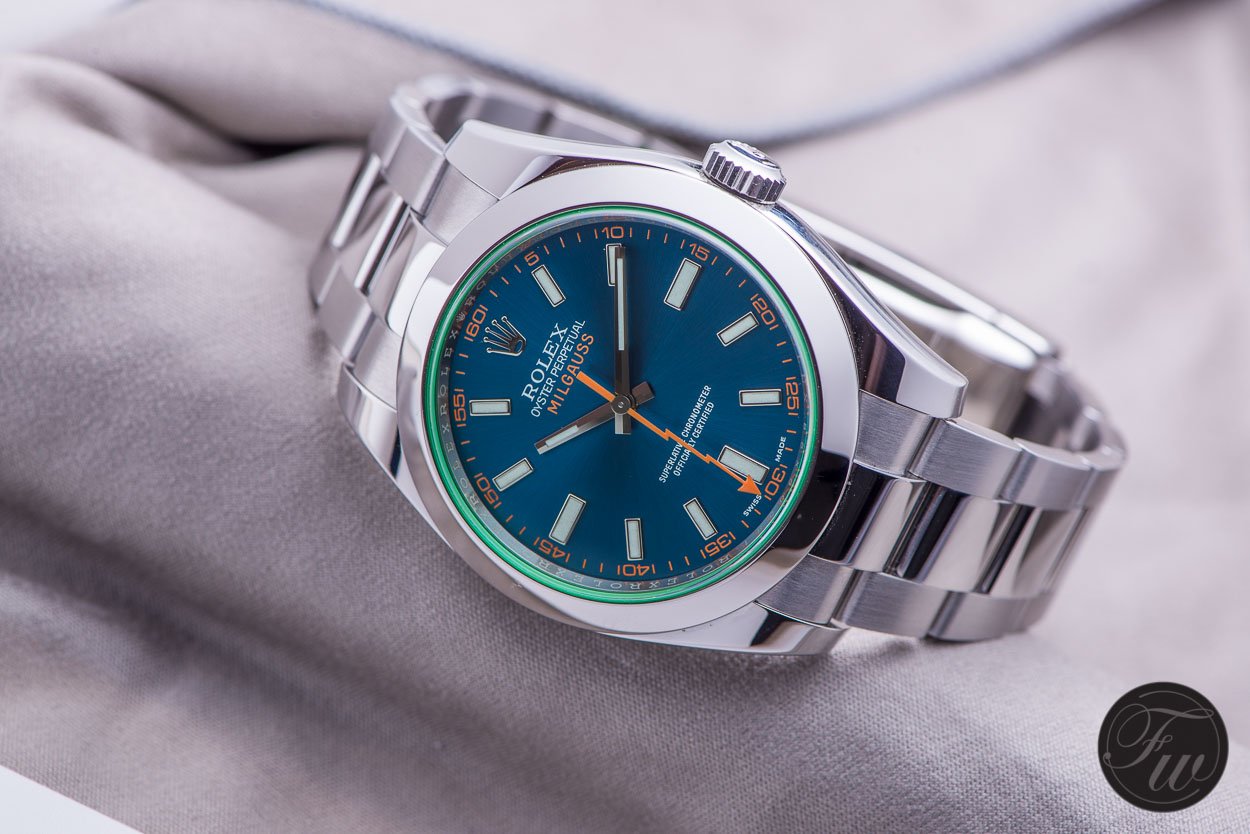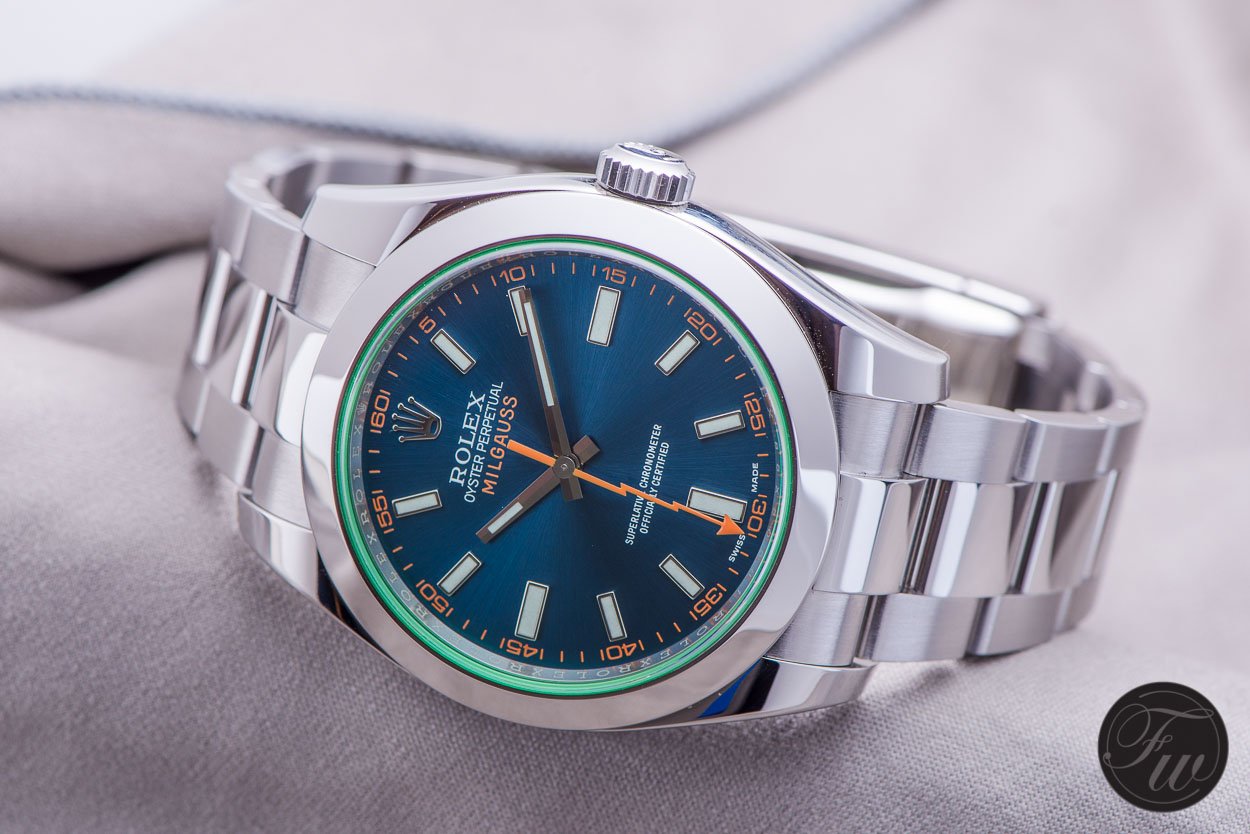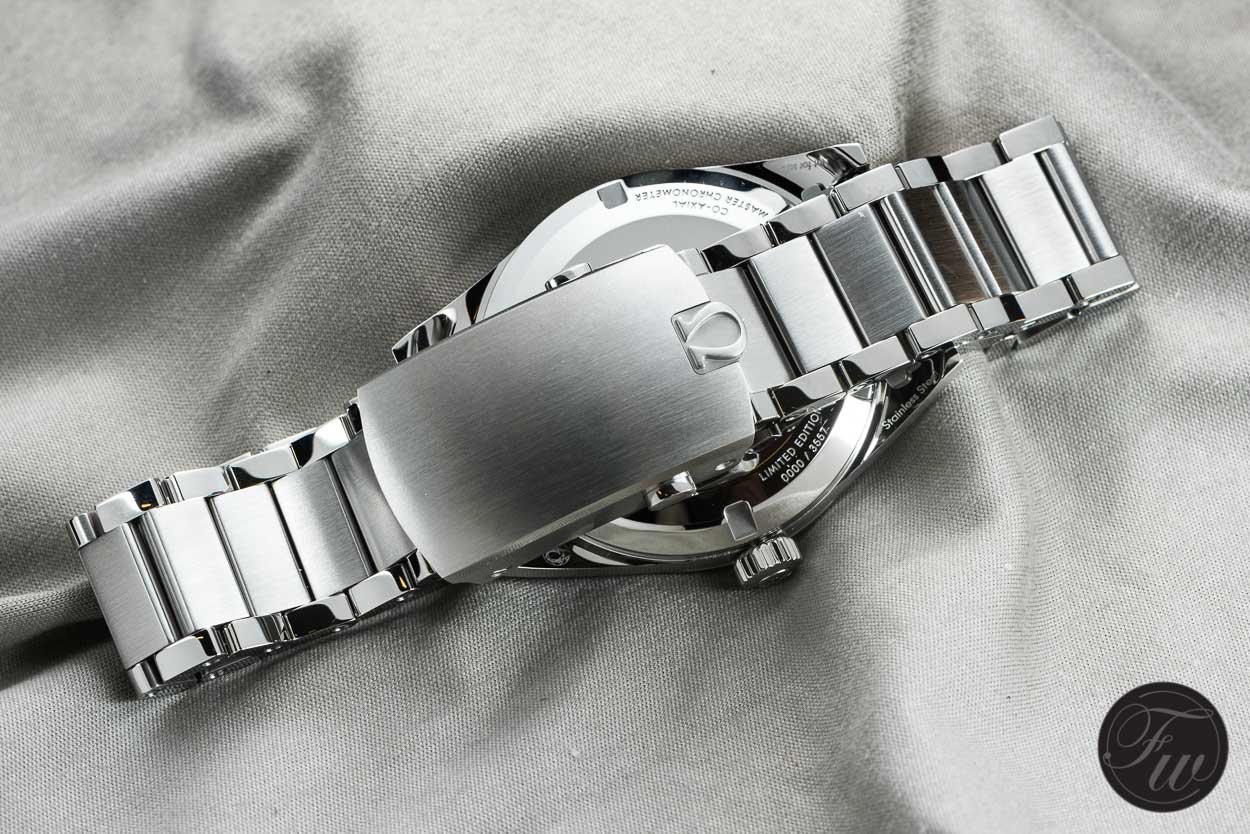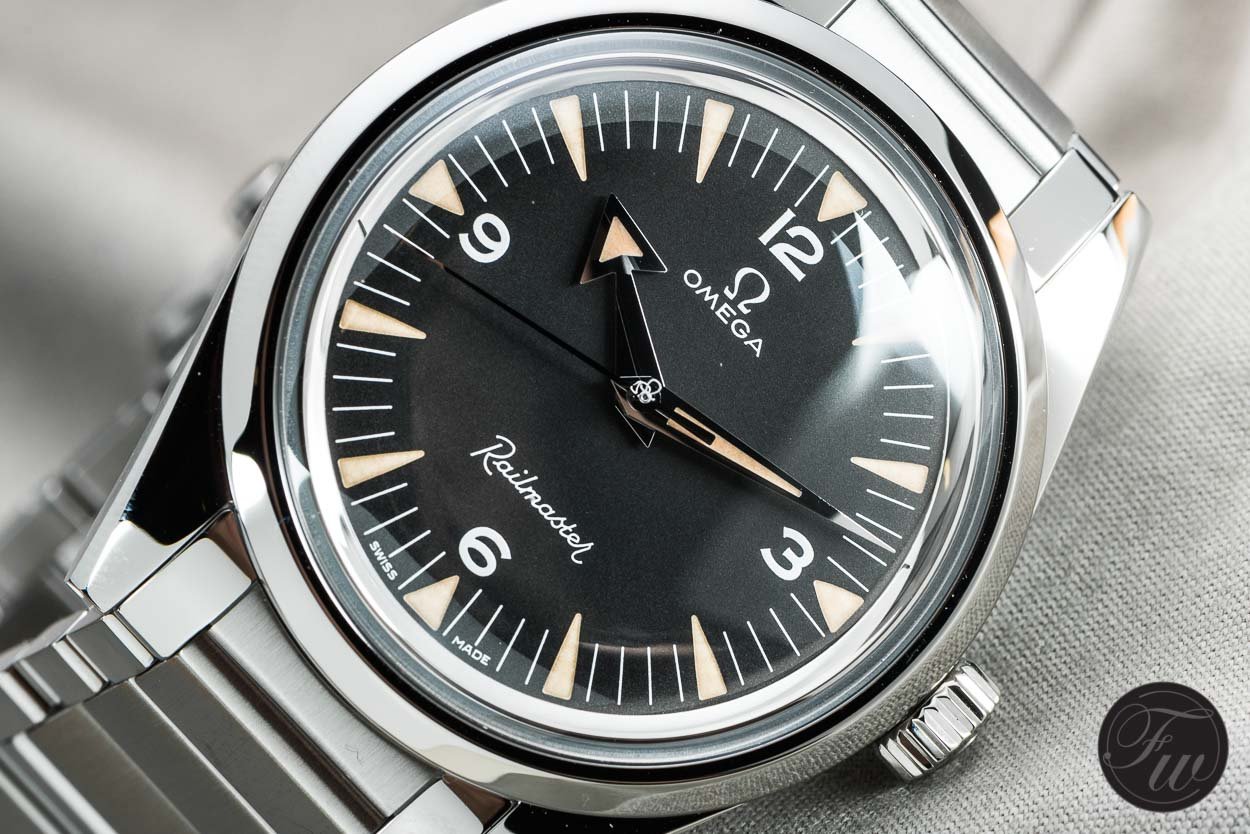Sunday Morning Showdown: Omega Railmaster Vs. Rolex Milgauss
In this Sunday morning column, two of our writers go head-to-head in an epic showdown for the ages. Strong opinions and hysterical hyperbole are welcome (so feel free to join in with the fun in the comments section below). And don’t forget to let us know which watches you’d like to see torn to shreds/effusively exalted next week. We’ll try and feature as many of our readers’ choices as we can. Omega steps up to the plate with the too-often ignored Railmaster. On the mound, pitching as if its life depended on it is the scientist’s darling, the Rolex Milgauss. This week it’s Jorg Vs. Ben. Let battle commence!
Sunday Morning Showdown is a fluid concept. Sometimes our editors clash on opinions of a single watch. Other times, we fight it out over two models of similar styles. The showdown has one thing that no other comparative column on the site has, though. Two of us. Two watch lovers duking it out for your vote. Sometimes, it can be a real slugfest…
Last week, Rob and Balazs went toe-to-toe on one of the year’s hottest watches. The Seiko SLA037J1 may be a sharp-looking, retro-inspired diver. But the price is eye-watering, which did not go amiss in the comments. Yet, marginally, Rob took the edge over Balazs to the tune of 52% in favor of the Seiko. In all honesty, I am still hurting from being annihilated by Jorg in the Daytona vs. “Ed White” showdown a fortnight ago. I thought I had that one in the bag. To save face, I am declaring war on the best anti-magnetic watch from two of the masters of mechanical watchmaking: I’m dragging the Rolex Milgauss into battle while Jorg will defend the position of the Omega Railmaster.
Omega vs. Rolex
The Milgauss was unveiled in 1956 with the Railmaster following in 1957. You have to remember, this was a time of tremendous scientific discovery in the post-war boom. Firms were harnessing magnets for household items, and the Space race was heating up. All of a sudden, the ferrous metal components within scientist’s wristwatches were exposed to heavy-duty machinery. Strong magnetic fields could wreak havoc on the oscillating balance wheels, pulling the hairspring spirals out of shape. The solution of the time was to shield the movement within a soft iron inner case deflecting the majority of the disrupting fields up to 1,000 gauss. Hence the name of the Rolex — Mil(le), meaning one thousand en Francais, and Gauss, the unit of measurement for magnetic induction.
Ben — Rolex Milgauss
Magnetic forces are still prevalent in our society — especially if you are a sex magnet like me. But seriously; radio waves, microwaves, fiber-optic cables, cellular towers — all things that keep us connected have various levels of electromagnetic-emitting charges. Even your phone or loudspeakers can vary the rate of your precious ticking timepiece. The technological underbelly of our nations enabled Jorg and I to publish this article to the web. But the impact on mechanical timepieces is felt even more so than it was when these were conceived.
These days, there are many more anti-magnetic solutions to choose from. Alternative materials for hairsprings, such as paramagnetic alloys, are unperturbed by magnetic fields. And yet still, the brands pay homage to the golden age of scientific breakthroughs with the inner cage — a “Faraday” cage — concept unchanged. My pick for this showdown is the Rolex Milgauss. Even to this day, if you were to unscrew the case-back of the Milgauss, all that would greet you is the dull grey Faraday cage rather than the highly thought-of movement.
Who says Rolex does not romanticize its past?
Just to make sure, Rolex has fitted caliber 3131 with a Parachrom hairspring. It is made from a proprietary Rolex alloy that does not deviate in magnetic exposure. No doubt, the level of anti-magnetism surpasses 1,000 gauss and then some — yet the traditional Milgauss name remains. Who says Rolex does not romanticize its past?
A colorful revival
In 2007, reference 116400GV brought back the lightning bolt seconds hand. This hand shape was last seen in the earliest reference, the 6541, but now in a striking orange. The dial selection consists of black or a Z-blue color you can see in the above picture. The “Z” stands for the zirconium content in the dial material. For a time, there was also a white dial version, until it was quietly discontinued sometime in 2016. It may have to do with the green-tint sapphire crystals that are only paired with the black and blue dial versions. The color mixture of blue, green, and orange may read as a clashing catastrophe on paper. However, the blend works perfectly, with each color getting a starring role in different lighting conditions. I would love to explain to you how Rolex produce this tinted crystal, but like a lot of its superlatives, Rolex is keeping shtum.
Jorg, I hear you are the master of rails. Care to tell me how you think the Omega can beat this Rolex?
Jorg — Omega Railmaster
“Master of rails”, hmm. Although the title seems far-fetched at first, it does bring back memories. Memories of my student days when the Dutch government provided me with a free public transport card which allowed me to travel all through the Netherlands without a worry in the world. With my strong love for indie music, there was no destination far enough to keep me from going there and seeing bands play live. But those stories are for a different time, to be shared over a nice craft beer.
Honestly, I really like the Milgauss.
Here we are again, Ben. Another Rolex versus Omega match-up. Once more, I am up against a professional modern Rolex. It makes my statement about not despising Rolex from the prior Sundays seem questionable. But while I’ll passionately take a swing at the Air-King and the Deepsea Sea-Dweller any time of the week — with the Milgauss it’s different. Honestly, I really like the Milgauss.
Ben: Good, well at least that’s settled. Readers, please feel free to skip to the voting section and select the Rolex.
Jorg: Hey, not so fast. Wait for my “but…”
Will the real scientist please stand up?
I like the Milgauss exactly for what it is: the quirky Rolex. As you said, the orange lightning bolt seconds hand, the green-tint sapphire crystal, and the Z-blue dial might sound like a catastrophe waiting to happen. But it works! And it works very well. Add the anti-magnetic properties and you have a seriously cool watch. Almost like a distant rebellious cousin in the orthodox Rolex family.
The Railmaster is superior to the Milgauss in many ways.
Now here is the “but”. But I would select and purchase the Omega Railmaster Co-Axial Master Chronometer 38mm over the Milgauss any day, without hesitation. Specifically, the model introduced in 2017 as part of the 60th anniversary 1957 Trilogy. The Railmaster is superior to the Milgauss in many ways. For starters, going by specs alone, the Railmaster is easily the better watch. The Omega can withstand up to 15,000 gauss, is powered by the METAS Certified Master Chronometer Omega Caliber 8806 with a co-axial escapement, and it possesses a silicon balance spring and a power reserve of 55 hours. It’s an anti-magnetic dream!
Ben: I think you and I have very different silicon dreams. Or am I thinking of silicone?
Quirky vs. universal appeal
Next to that, the Railmaster’s design is a lot more elegant and less chunky. No one said an anti-magnetic watch needs to be chunky, right? Omega proves that with a very sleek profile and a great, low-lying bracelet. It makes the 38mm Railmaster a joy to wear every day. As such, it is less of a bold statement than the Milgauss.
Jorg: Even more importantly, while I love the looks of the Milgauss, the Railmaster’s design shows that a quirky tool watch doesn’t have to look quirky. And I love that. It makes the Railmaster 1957 Trilogy a much more mainsteam. It is digestible. It is versatile. The iconic design of the case, the dial, and the hands are as relevant as ever. As a result, the potential appeal of the Railmaster is much broader than that of the Milgauss. Something the updated 40mm Omega Railmaster lacks, also.
The Railmaster 1957 Trilogy has the power to compete with both the Rolex Milgauss and the Explorer I…
As I explained in my article on five Omega’s that deserve more attention, I strongly feel the Railmaster 1957 Trilogy needs to be the inspiration for the modern-day version of the Railmaster. The iconic design shows that it has what it takes to compete with the Rolex Milgauss, the Air-King, and even the Explorer I, based on looks and specs.
The Railmaster 1957 Trilogy design does show how unique the design was of the 1957 CK2914 this Railmaster pays tribute to. It’s what the current Railmaster lacks in my opinion. Every design aspect of the Railmaster 1957 Trilogy is iconic, but the non-limited Railmaster has lost the spirit of the original. It has made me love this Railmaster 1957 Trilogy even more.
So tell me, Ben, are you magnetized to the Railmaster? Or are you swayed by the ever-present Rolex appeal? I’d love to hear what makes the Milgauss so special for you.
Going for the jugular
Ben: So far, I feel we are pulling punches here, Jorg. We may have mutual respect for our choices of Showdown watches. But, I woke up in a bad mood this Sunday morning and will not be holding back anymore. Firstly, you are right that the retro Railmaster is more attractive than the non-limited version. But let me just touch on that word “limited”. The Omega Trilogy recreations of the CK2913 Seamaster, the CK2914 Railmaster, and CK2915 Speedmaster came as a box-set of three watches in a run of 557 examples. On top of that, each individual watch had its own run of 3,557 pieces. In total then, there are 4,114 “limited edition” 1957 Railmasters in existence: 3,557 with a lovely clean dial, and 557 with a horrifically imbalanced Trilogy number below the Omega logo.
Even for Omega, 4,114 pieces is overzealous to count as “limited”.
Seriously, why spoil a perfectly good dial for the collectors willing to fork out more money for a set of three watches? Even for Omega, 4,114 pieces are overzealous to count as “limited”. At least the Milgauss does not claim limitation.
Jorg: I have to give you that Ben. However, nowadays the magic words are not “limited edition” but “limited production”. Something Rolex knows all about. Can you actually get a Milgauss if you want one?
Ben: For a time, the Milgauss was one of the most attainable professional Rolex models to pick up at retail without waiting. You made mention above that the Milgauss case is chunky. Well, I cannot deny that, and it could be one of the reasons the ref. 116400GV was not as sought after as typical sporty Rolexes. The Milgauss is 0.5mm thicker at 13.5mm than the 300-meter deep-diving Submariner. Let’s not forget, though, that we are looking at a dial with three funky colors and a lightning bolt seconds hand — I do not think Rolex was aiming for subtlety when it came to this watch.
Why the Milgauss and not the Air-King?
Besides, the extra girth and mass of the Milgauss remind the wearer of its anti-magnetic capabilities, which is why are here to begin with. I also want to refer back to Air-King that shares the cal. 3131 movement with this Milgauss. It may seem better value to buy the Air-King and save €1,800. But what you get with the Milgauss adds so much more bang-for-buck.
Jorg: And a €1,400 price difference compared to the Railmaster, I might add. Defending that seems like a bit of a stretch. But please do continue…
Ben: Firstly, there’s the history and lineage that spans decades with a core concept that has maintained its course. Meanwhile, the Air-King has been chopped and changed into whatever Rolex needs it to be to fit an ever-transforming gap in the market. Rolex enthusiasts appreciate the baton markers of the Milgauss and its matching straight hands. The Milgauss also has the tinted sapphire crystal that resembles the emerald Rolex Boutique display windows. Lastly, equipping the tapering Oyster bracelet with polished center links and the quick-extension clasp was a masterstroke.
The same beautiful tapering of the Oyster bracelet cannot be said of the industrial straight-link bracelet of the Omega Railmaster, can it, Jorg? I mean, it is such a jarring feature that throws the Railmaster design off-balance. How can you possibly love it?
Living up to modern standards
Jorg: The bracelet is an homage to the bracelet of the original CK2914 from 1957, so it supposed to look exactly like this. But Omega did produce a retro-styled bracelet that is up to modern-day standards. Firstly, the fine-tuning potential of the Railmaster’s bracelet is bigger. Because the links are smaller, there are more individual removable links than on the Oyster bracelet, so adjusting the size to your wrist can be done more precisely.
Next to that, there is a push-button slider for incremental sizing changes up to 9.7mm. And lastly, the clasp features a trigger release system with two push buttons on the side of the clasp, making it more sophisticated than the Milgauss’s lift-lock system that can cost you a nail or two.
I know the retro looks might be deceiving, but Omega has actually created an excellent modern watch with the Railmaster 1957 Trilogy. By using modern standards in build quality and choosing the anti-magnetic Omega Caliber 8806 that is Certified Master Chronometer, Omega has created the perfect modern-day recreation of the 1957 original. I know the Railmaster has always faced the tough task of fighting two icons in the Speedmaster and the Seamaster 300.
Omega has created a better watch for a more affordable price that also shows the powerful potential of the Railmaster.
But its relevance should not be found in fighting these two icons. Its current relevance should be found in competing with peers from other brands like the Milgauss. And in my opinion, Omega has created a better watch for a more affordable price that also shows the powerful potential of the Railmaster. That’s why I think it’s a better watch.
But what do you think? Let us know in the voting and comments section below!


